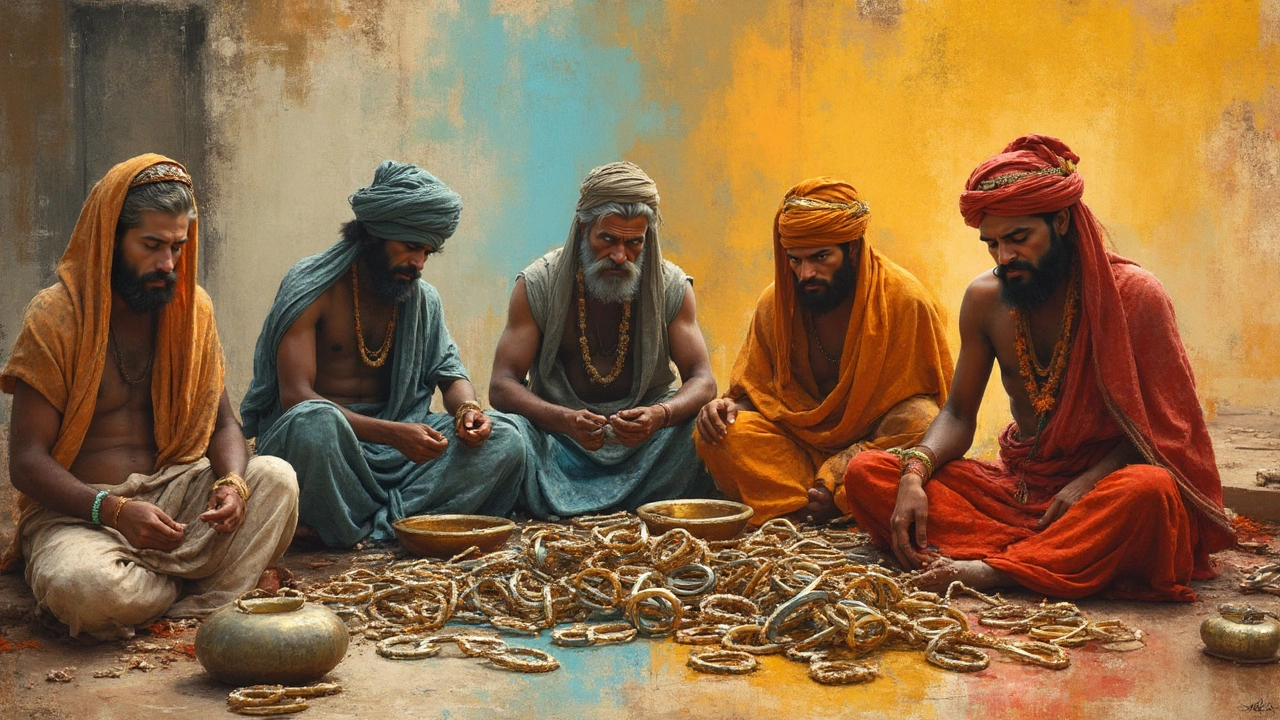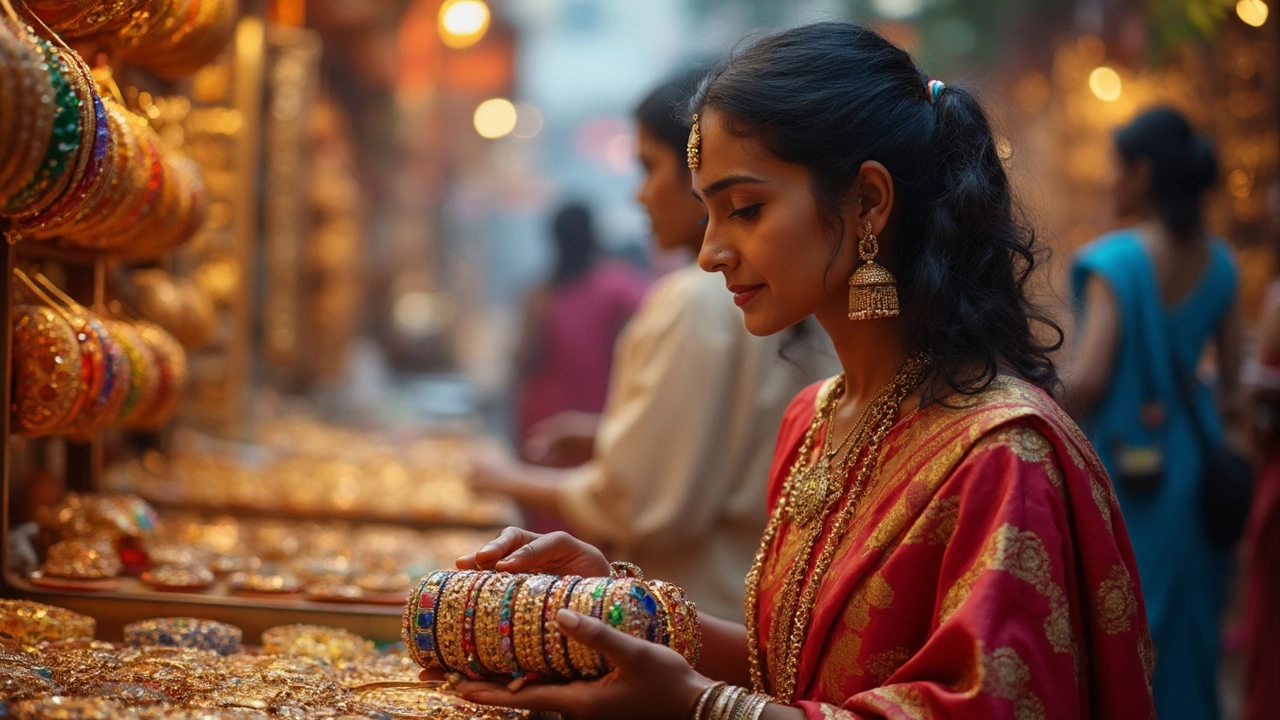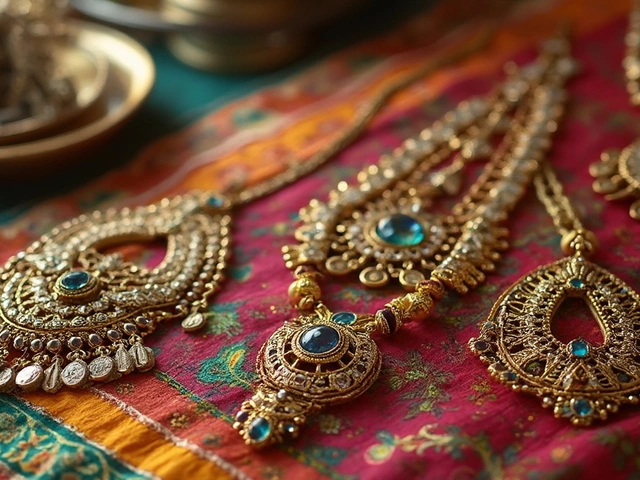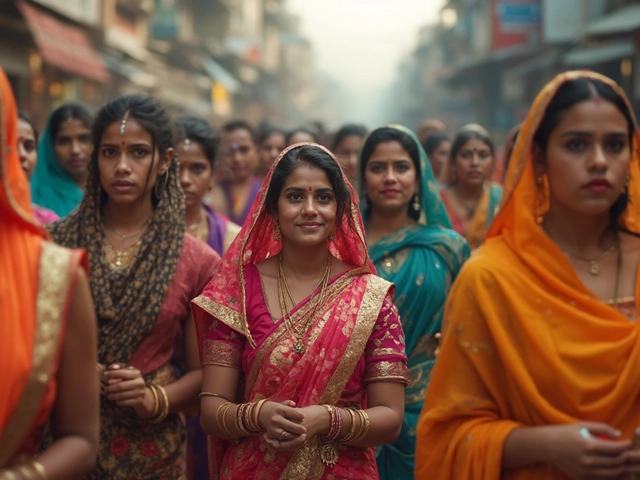
You know how a single accessory can totally change the vibe of an outfit? Bangles do just that. They’ve been around for thousands of years, and today, they’re as much a staple at weddings as they are at street markets and trendy Instagram reels. But did you ever wonder why there are so many different bangles? Or why your grandma’s favorites look nothing like the chunky resin ones from your go-to fashion store? Let’s get right into what actually makes up the big, dazzling world of bangles—specifically, the three types that keep coming back in every jewelry box and style guide.
Traditional Bangles: Carved by Culture, Carried by Time
Traditional bangles have stories, not just styles. Think of the intricate gold kadas your aunt shows off during Diwali, or the red and white glass choodas stacked high on a new bride’s arm. These bangles are more than just decoration—they're soaked in meaning. For instance, in India, archaeological digs at places like Mehrgarh have unearthed bangles dating back over 5,000 years, made of everything from terracotta to shell to copper. Traditional bangles aren’t stand-alone either; they show up in sets, stacked and loud, sometimes paired by color or texture, and matched to region or faith.
types of bangles in traditional categories include:
- Metal Bangles: Gold, silver, or copper are classic choices, sometimes set with precious stones or intricate filigree work. In South India, temple jewelry style gold bangles are a family heirloom.
- Glass Bangles: Hugely popular in places like Hyderabad and Firozabad, glass bangles can symbolize everything from prosperity to martial status. Ever heard the sound of glass bangles clinking? It’s kind of magical.
- Lac Bangles: Made from natural resin, lacquer bangles are famous in Rajasthan and Bihar and are handmade using ancient techniques—no two are alike.
These bangles can be loaded with emotional significance. For example, in Punjabi culture, chooda and kalire bangles are part of a bridal trousseau, with every ceremony marking a passage. And in the Maharashtra region, green glass bangles say “I’m married!”—skip them, and grannies will actually scold you.
So what sets a traditional bangle apart? It’s all about technique, heritage, and sometimes, superstition. Many artisans still use hand tools, shaping bangles the way their families have for generations. There’s even a belief that gold bangles should never be hollow, because they’re supposed to bring unbroken good luck. One fun tip if you buy them: measure your wrist carefully, because traditional bangles don’t flex much. And if a set breaks, it’s usually a reason to buy a new pair, not patch up the old.

Modern Bangles: Sleek Lines for Everyday Scenes
Now step into a mall, or scroll through any online jewelry site, and you’ll spot a different bangle crowd. Modern bangles have a crisp, minimal vibe, and you see them everywhere. Instead of stacks and jingles, think streamlined cuffs, geometric shapes, thin bands with a single gem—or maybe that metallic ‘H’ bracelet that goes viral every couple of months.
Modern bangles have exploded in popularity because they’re easy to work with any outfit. They’ve lost the strict “only gold, only glass” rules and instead go wild with materials—think titanium, stainless steel, ceramic, silicone, and platinum. Even high-end designers like Cartier and Tiffany have bangle lines. Remember the ‘Love’ bangle, screwed on with a mini screwdriver? Total status symbol.
Here’s a fun fact: back in 1970s, designers like Elsa Peretti began playing with fluid forms, which meant bangles could hug your wrists or swing up above the elbow. No more slipping and sliding—just strong, sculptural design. Today, most modern bangles use clasps, magnetic closures, or even hinges, which is great if you don’t like squeezing your hand through tiny openings.
- Cuff Bangles: Open-ended, easy to slip on and off. Big with men too—David Beckham rocks one with his tattoos, setting a trend for everyone else.
- Chain Bangles: Sometimes called “flex” or “link” bangles, these combine chain flexibility with classic bangle design. Comfortable and stackable.
- Minimalist Bands: Best for everyday—wear one solo, or mix metallic finishes for a casual, effortless look.
Modern bangles mean no rules. Mix silver with rose gold, blend leather with enamel, or stack wide cuffs over a silk sleeve. What counts is comfort and how they play with your style. Tip: A chunky cuff is an instant upgrade to a plain tee and jeans.
Here's a quick table summarizing some differences:
| Type | Main Materials | Origins | How Worn |
|---|---|---|---|
| Traditional | Gold, silver, glass, lac | South Asia, Middle East | Stacked, multiples |
| Modern | Metal, ceramic, resin, leather | Worldwide | Solo or minimal stacking |
| Fashion | Plastic, acrylic, mixed media | Global | Single, statement piece |

Fashion Bangles: Playful Statements and Everyday Fun
If traditional bangles are about culture and modern ones about design, fashion bangles are all about making noise—sometimes literally. These are the pieces you spot at music festivals, on city sidewalks, or in summer beach snaps. Made from plastic, acrylic, wood, fabric, even recycled skateboards—nothing’s off-limits. Fashion bangles are meant to be bold, bright, and fun. They’re what you buy on a whim, match to a top, or use to pull together a whole look.
Most fashion bangles aren’t shy when it comes to color or size. Oversized acrylic bangles? Big in the ’80s, but still turning heads now. Wide Perspex cuffs with neon glitter, or printed resin pieces that match your phone case, are never out of style. Here’s the thing: the more creative, the better. Some designers toss in embedded flowers, dried fruit slices, or metal flakes—basically, anything goes. If you can dream it, someone’s made it into a bangle.
- Chunky Plastic Bangles: Perfect for themed parties, casual Fridays, or anyone who likes their accessories to do the talking.
- Wooden or Beaded Bangles: Great for summer outings, eco-friendly vibes, or layering up a boho festival look.
- Fabric Wrap Bangles: A hit with crafters and DIY fashion fans—wrap old bangles with thread, ribbon, or beads to match every outfit.
One cool thing: these bangles are usually affordable, so you can grab them in every color and mix without guilt. They're also forgiving about size, since most have some flex or come in wide fit ranges. Styling tip: if you're going big with fashion bangles, keep clothes solid to let the wrist game stand out. Or, flip that—go wild with patterns, but match bangle color to one shade in your outfit for balance.
Fashion bangles can even be meaningful. Charity bracelets like the iconic Livestrong bands, or cause-specific bangles, have become global trends. Want to make a statement? Go for one with a slogan or a symbol you love.
Care-wise, they're low-maintenance, but keep resin or plastic bangles out of direct sun to avoid fading. And if you ever chip one, a dab of clear nail polish can cover up a scratch in a pinch. Most importantly—wear what makes you happy. If you ever outgrow a style, pass those bangles along. Someone else can turn your extra into their new accent.



